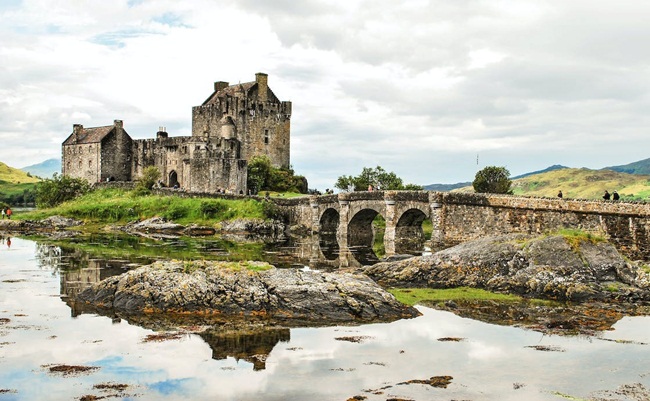Below, we review some of the most popular Lords of Scotland.
Scotland had a peerage system similar to what is obtainable in England. The United Kingdom has five peerage divisions; the Scottish Peerage is one of them. The Peerage of Scotland was created in 1707 after the Treaty of the Union when the Kingdom of England and Scotland were combined to form a new country called Great Britain.
This led to the introduction of a new Peerage system in Great Britain, and new titles were created for the affluent nobles in society.
Scottish Peers had the legal right to sit in Parliament, but after the Union Treaty, they became representatives who could sit in the Westminster House of Lords. Furthermore, the Peerage Act gave Scottish Peers sitting rights, which were revoked later.
Over the years, many Scottish Lords have distinguished themselves and attained legendary status. Even after their passing, tales and songs are still told and sung in their honor. Many of the most notable Scottish Lords in History were the first holders of titles attached to their houses.
Below, we review some of the most popular Lords of Scotland.
Most popular Lords of Scotland
Alexander de Forbes
James II created the House of Forbes in 1436, and the title holder of this house is a senior Lord in the Peerage of Scotland. Alexander Forbes was the legendary baron of Forbes and ruled at Forbes Castle in Alford, Aberdeenshire. The exact date of the creation of this title is unknown, but many believe it happened in July.
H was the father of many successful Lords after him, such as his son, who served in Aberdeenshire as the 12th Lord, and his great-grandson, who served as a Peer representative and fought at the 1815 Battle of Waterloo. He was the first chief of the Forbes clan and is still revered to this day
Andrew Gray
Andrew Gray was the first title holder of the House of Gray after James II created a Barony for the area in July 1445. Before the Barony was created, Andrew Gray was a politician and diplomat and was appointed as a commissioner by James I in England for three years between 1424-1427. At the time, he accompanied Lady Margaret Stewart to Paris when she married Louis XI, King of France, in 1436.
Sir Gray was a successful administrator and served as Scottish Commissioner from 1449 until 1451 and the Master of James II household until 1452. He also served as a Warden after quitting the royal household in 1459. Then, in 1489, after the Barony of Gray was created, James I granted the Lordship title to him officially to become the Baron or Lundie.
Btw, did you know that you, yourself, can become a lord? How? Find out here.
Lawrence Abernethy
Another known Lord of Scotland is Lawrence Abernethy, who became Lord Saltoun. This title was created for Sir Lawrence in 1445, and it remained in the family until the demise of his descendant in 1669, who was the 10th Lady of the House of Saltoun. After her death, her cousin, Alexander Fraser, took over the title to become the 11th Lord of Saltoun. Fraser was the first son of Margaret Abernethy and Alexander Fraser, and his mother was the daughter of the 7th Lord of Saltoun. Even though the Lordship of Saltoun has remained with the Fraser's ever since, the name of Lawrence Abernethy still commands tremendous respect in Scotland amongst the commoners and noble class.
Many of his descendants became successful administrators, soldiers, and business persons, and many more represented the family representatives to the House of Lords.
William Sinclair
William Sinclair was another distinguished Lord of Scotland. He became Lord Sinclair after he combined the Earldoms of Caithness and Orkney. His father was Henry Sinclair II, who died as the Earl of Orkney in 1420. According to records, he was the first person to bear the title, but it took significant sacrifices on his path.
He surrendered his position as the Earl of Orkney to secure the earldom of Caithness. By doing, he divided his estates to his eldest son from a previous marriage and also gave the Barony of Roslin to another older son by his second wife. As for the Earldom of Caithness, he gave that to his second son from his second marriage. In all, he had three sons who became Earls of Orkney, Caithness, and Roslin. All three sub-divisions fall under the House of Sinclair.
William Borthwick
Lord Borthwick is a Peerage title in Scotland, and the first holder was William Borthwick. James II created this title on June 12, 1452, and 23 other Lords reigned over the House of Borthwick after him. William Borthwick and his descendants are prestigious title men in Scotland and are one of the most important families in Scottish High society hence their subsidiary title of Hereditary Royal Falconer or Scotland. According to historical accounts, the Borthwick's were an ancient family of noble class who migrated from Hungary to Scotland in the company of Queen Margaret. At the time, Malcolm Canmore was the ruler of Scotland and King Alexander II. His family still plays a major role in Scottish politics.
Tatiana is the news coordinator for TravelDailyNews Media Network (traveldailynews.gr, traveldailynews.com and traveldailynews.asia). Her role includes monitoring the hundreds of news sources of TravelDailyNews Media Network and skimming the most important according to our strategy.
She holds a Bachelor's degree in Communication & Mass Media from Panteion University of Political & Social Studies of Athens and she has been editor and editor-in-chief in various economic magazines and newspapers.




























































































































































































